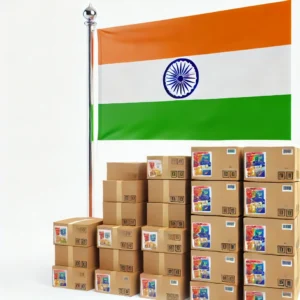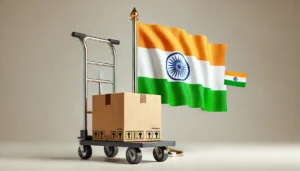How US Entrepreneurs Can Effectively Distribute in India?
Expanding into international markets is a significant milestone for any business. Among the myriad of opportunities, India stands out as a promising destination for US entrepreneurs. With its large and growing consumer base, diverse market, and improving business environment, India offers a wealth of potential. However, effectively distributing products in India requires a strategic approach tailored to the unique characteristics of the market. This article explores key strategies for US entrepreneurs looking to distribute their products in India successfully.
Understanding the Indian Market
Before diving into distribution strategies, it’s crucial to understand the Indian market:
- Diverse Consumer Base: India is a vast country with a diverse population. Consumer preferences can vary significantly across different regions, age groups, and income levels.
- Growing Middle Class: The burgeoning middle class in India is driving demand for a wide range of products, from everyday essentials to luxury goods.
- Digital Adoption: With increasing internet penetration and smartphone usage, digital channels are becoming crucial for reaching Indian consumers.
- Partnering with Local Distributors
One of the most effective ways to distribute products in India is by partnering with local distributors. These distributors have an established network and a deep understanding of market dynamics.
Benefits:
- Access to Existing Distribution Channels: Local distributors have well-established networks that can help in efficiently reaching various retail points across the country.
- Local Market Knowledge: They possess invaluable insights into local consumer behavior, market trends, and regional differences.
- Reduced Operational Complexities: Partnering with local distributors can simplify logistics, warehousing, and distribution processes.
Considerations:
- Choose Reputable Distributors: It’s crucial to select distributors with a strong reputation and reliable track record.
- Align Capabilities with Business Goals: Ensure that the distributors’ capabilities and market reach align with your business objectives.
- Establish Clear Agreements: Define roles, responsibilities, and performance metrics clearly in your partnership agreements.

2. Leveraging E-commerce Platforms
The rise of e-commerce in India has opened up new avenues for product distribution. Platforms like Amazon India, Flipkart, and Snapdeal offer extensive reach and convenience.
Benefits:
- Wide Reach: E-commerce platforms provide access to a vast customer base across India, including remote and rural areas.
- Lower Entry Barriers: Setting up an online store is relatively easier and less costly compared to establishing physical retail presence.
- Market Testing: E-commerce allows businesses to test market demand with minimal investment before committing to larger-scale operations.
Considerations:
- Localized Marketing Strategies: Invest in marketing strategies tailored to Indian consumers, such as local languages and culturally relevant content.
- Compliance with Platform Policies: Ensure adherence to the policies and guidelines of e-commerce platforms.
- Understand Indian Regulations: Be aware of Indian e-commerce regulations and ensure compliance with import duties, GST, and other legal requirements.
- Establishing a Direct Presence
For businesses with significant resources, establishing a direct presence through subsidiaries or branch offices can provide greater control over distribution and brand positioning.
Benefits:
- Direct Customer Engagement: A direct presence enables closer interactions with customers, allowing for better understanding of their needs and preferences.
- Control Over Branding: Businesses can maintain consistent brand messaging and customer experience.
- Long-Term Growth Potential: Establishing a direct presence can lay the foundation for long-term growth and expansion.
Considerations:
- High Initial Investment: Setting up operations in India requires substantial financial investment.
- Regulatory Compliance: Navigating the regulatory landscape, including company registration, tax compliance, and labor laws, can be complex.
- Operational Challenges: Managing logistics, supply chain, and local talent requires thorough planning and local expertise.
- Utilizing Digital Marketing and Social Media
Digital marketing and social media are powerful tools for reaching Indian consumers. Platforms like Facebook, Instagram, and WhatsApp are widely used in India.
Benefits:
- Cost-Effective: Digital marketing offers a cost-effective way to reach a large audience compared to traditional advertising.
- Targeted Reach: Businesses can use data-driven strategies to target specific demographics and regions.
- Direct Engagement: Social media allows for direct interaction with consumers, fostering stronger relationships and loyalty.
Considerations:
- Tailor Content to Local Preferences: Create content that resonates with local audiences, including regional languages and cultural nuances.
- Use Regional Languages: Engage with consumers in their preferred languages to build trust and relatability.
- Influencer Collaborations: Partner with local influencers to amplify your reach and credibility.
- Navigating Regulatory and Compliance Requirements
Understanding and complying with local regulations is crucial for smooth distribution in India. This includes import duties, GST (Goods and Services Tax), and other legal requirements.
Benefits:
- Avoid Legal Issues: Compliance with local laws helps avoid legal disputes and penalties.
- Build Trust with Local Stakeholders: Adhering to regulations builds trust with customers, partners, and authorities.
- Ensure Smooth Operations: Proper compliance ensures uninterrupted business operations.
Considerations:
- Work with Local Advisors: Engage local legal and tax advisors to navigate the regulatory landscape effectively.
- Stay Updated on Changes: Regulations can change frequently; staying informed helps in maintaining compliance.
- Documentation and Reporting: Ensure accurate documentation and timely reporting of financial and operational activities.

- Building Strong Relationships
In India, business relationships are built on trust and personal connections. Invest time in building and nurturing relationships with key stakeholders, including distributors, suppliers, and customers.
Benefits:
- Enhanced Collaboration: Strong relationships foster better collaboration and understanding.
- Smoother Negotiations: Personal connections can facilitate smoother negotiations and agreements.
- Long-Term Success: Building trust and goodwill can lead to sustained business success and loyalty.
Considerations:
- Regular Engagement: Maintain regular contact with partners through meetings, calls, and visits.
- Attend Industry Events: Participate in industry conferences, trade shows, and networking events to build connections.
- Be Responsive to Feedback: Show responsiveness to feedback from partners and customers to build trust and improve relationships.
Conclusion
Expanding your business into India offers immense opportunities, but it requires a well-thought-out distribution strategy tailored to the unique characteristics of the market. By partnering with local distributors, leveraging e-commerce platforms, establishing a direct presence, utilizing digital marketing, navigating regulatory requirements, and building strong relationships, US entrepreneurs can effectively distribute their products in India and tap into its vast potential. With the right approach, India can become a key market in your global expansion strategy, driving growth and success for your business.
Looking to expand your business into the vibrant Indian market? Avenue Consumer Brands specializes in helping US businesses effectively distribute their products in India. With our extensive network of local distributors, expertise in e-commerce platforms, and tailored digital marketing strategies, we ensure your brand reaches the right audience. Partner with us to navigate regulatory requirements, build strong relationships, and achieve sustainable growth in one of the world’s fastest-growing economies. Contact Avenue Consumer Brands today to unlock your business’s potential in India!
FAQs
- What is the best way to start distributing products in India?
Partnering with local distributors who understand the market dynamics and have established networks is often the most effective starting point.
- How important is e-commerce for distributing products in India?
E-commerce is crucial due to India’s growing digital adoption, offering extensive reach and a convenient platform for market entry with lower barriers.
- What are the key regulatory considerations for distributing products in India?
Key considerations include complying with import duties, GST, and other local regulations. Working with local legal and tax advisors is essential for navigating these requirements.
- How can digital marketing help in distributing products in India?
Digital marketing allows targeted reach and direct consumer engagement. Utilizing platforms like Facebook, Instagram, and WhatsApp can enhance brand visibility and customer interaction.
References:
A Guide to Doing Business in India – U.S. Chamber of Commerce
The Future of Customer Experience in India: Insights from Forrester


My brother recommended I might like this web site He was totally right This post actually made my day You cannt imagine just how much time I had spent for this information Thanks